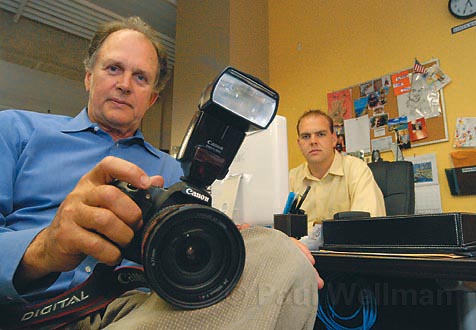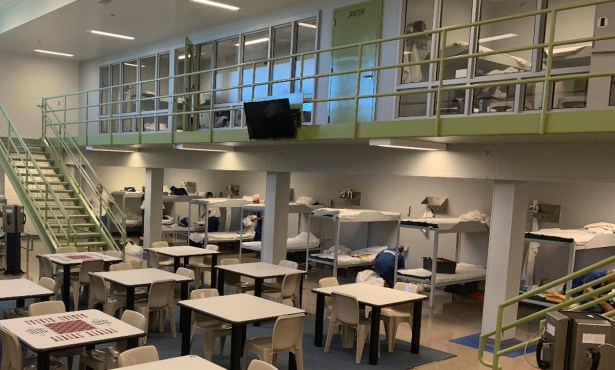Daily Sound Ordered to Surrender Photos
Cloud of Contempt

The Santa Barbara Daily Sound will face contempt-of-court charges if the newspaper refuses to turn over unpublished photographs taken in the aftermath of this spring’s fatal gang melee in front of Saks Fifth Avenue in downtown Santa Barbara. The photos were subpoenaed by Public Defender Karen Atkins to help the defense of her client, 14-year-old Ricardo Juarez, who is accused of murdering 15-year-old Luis Angel Linares. Jeramy Gordon, the founding publisher of the year-and-a-half-old Sound, said that to submit the work would violate press neutrality, adding that if he had photos that either exonerated or damned Juarez, he would have published them. Gordon accused Atkins of wielding the subpoena as a way to retaliate against the Sound for its publication of the defendant’s image in a photo that the paper republished in a July 31 report on the contempt threat. “We’re going to see if we can afford to continue to fight this,” Gordon said, “and if we can we are definitely going to.”
At a hearing before Judge Brian Hill on Monday, July 30, attorney Michael Cooney argued that the Sound‘s photographs fell under California’s Journalistic Shield Law, which protects journalists from having to reveal their sources or unpublished work. Hill disagreed and ordered the Sound to submit all 140 photos from the afternoon of the murder by 4 p.m. on Friday, August 3, or face contempt charges Monday morning. A preliminary hearing in the Juarez prosecution is scheduled for the same day.
Atkins did not deny she was upset by the publication of Juarez’s photo. “I was disappointed that they did that because there are significant ID [identity] issues in this case,” she said. Atkins said she called Gordon after Juarez’s photo ran to explain how the publication of his image damaged her defendant’s chances of getting a fair trial. Of the more than 200 convicted felons who have been exonerated by DNA evidence, she said, most were convicted because of faulty identification procedures. “That’s why we were trying to be very careful about not having [Juarez] photographed,” Atkins said.
However, Atkins said, her anger is not the reason she is asking for the Sound’s digital camera discs. The judge did not require her to detail her case in open court. However, the photographs could help her challenge some of the witness testimony, she said during an interview, and sort out the “tremendous amount of chaos and confusion” during the deadly brawl. “There were lots of witnesses who saw lots of things,” she said, “but putting it all together and determining who did what is very difficult and a huge issue in this case. There were many kids dressed similarly in many details, running back and forth.” Asked whether she plans to subpoena the photographs from all of the journalists on the scene, Atkins responded, “I haven’t contemplated that.”
Attorney Cooney, who is representing the Sound, said that according to the judge’s ruling, Atkins can request photographs from any media, but she is under no obligation to therefore request photos from all media. He said Hill relied largely on a seminal 1990 case, Delaney v. Los Angeles Superior Court, in which the California Supreme Court essentially ruled that a defendant’s right to a fair trial trumps the Shield Law: Journalists can be required to produce unpublished evidence if it can be reasonably expected to help a criminal defendant. Cooney argued that two more recent cases gave journalists more protection, but according to Cooney the judge “was obviously concerned with bending over backward to be fair to the defense.” He also suggested that Atkins’ real motive was not to gather evidence so much as to punish the Sound.
Contempt sanctions against journalists are rare, but in recent years, reporters have been jailed for contempt, the longest such term being the 225 days served in 2006 by Joshua Wolf, a videoblogger and onetime Independent intern who refused to turn over to federal prosecutors footage of an anti-G8 demonstration. Marin Independent Journal reporter Dan Fost was fined $1,000 a day for refusing to answer questions during a 2000 murder case, though the contempt ruling was reversed on appeal. Deputy District Attorney Hilary Dozer, who is prosecuting the case against Juarez, said of the matter, “I am not aware of anybody in this jurisdiction who has been held in contempt in this type of situation, so it’s an open question as to what Judge Hill, who is a relatively new judge, will do.”
“The reason I’m standing my ground on this,” Sound publisher Gordon said, “is because I believe reporters and photographers are neutral observers protected by the First Amendment, they are not supposed to be an arm of the police, the District Attorney, or the Public Defender.”



